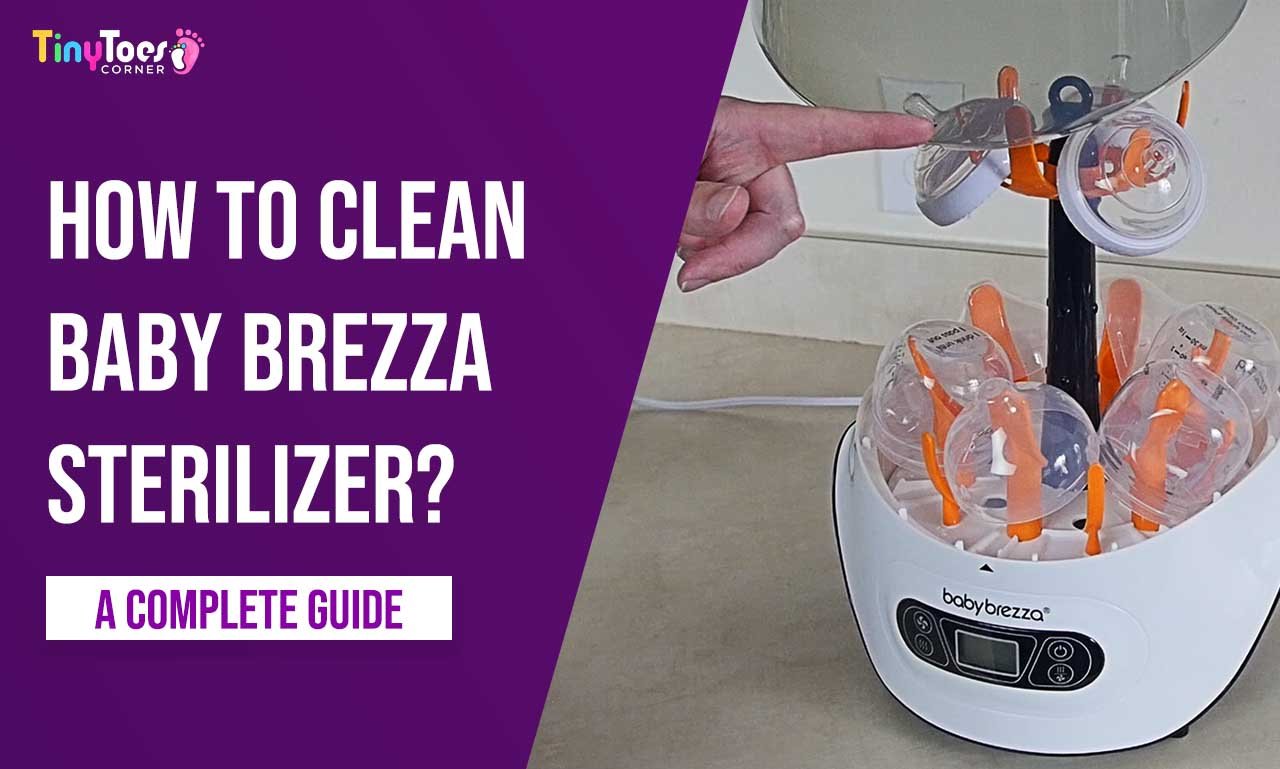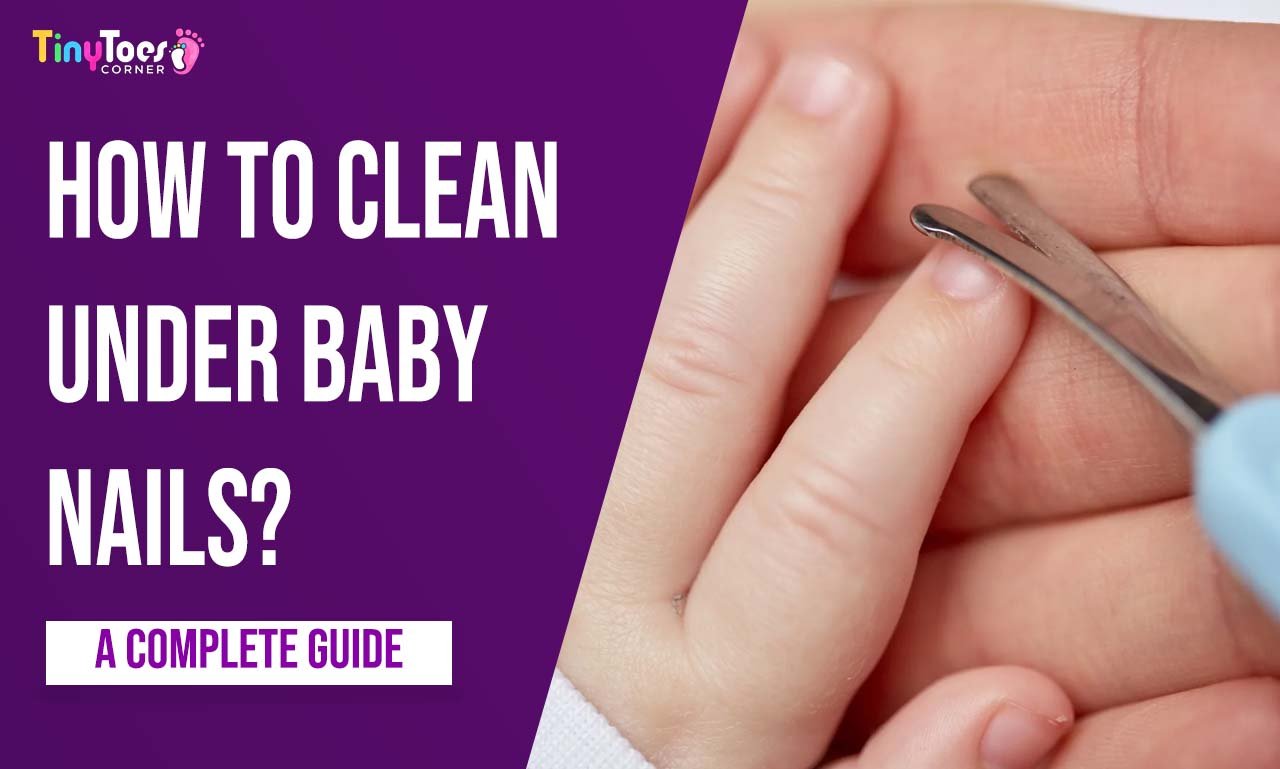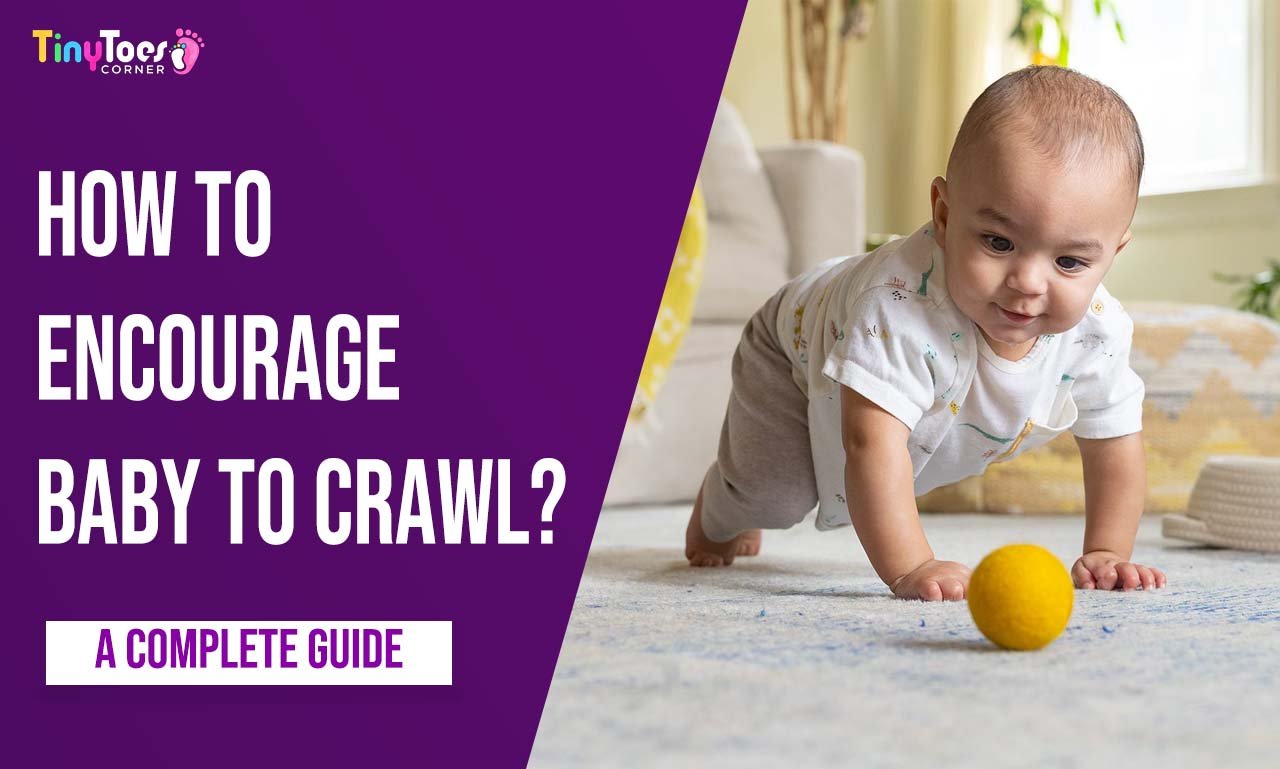
Newborn babies explore the world in a very unique manner in first two-three years of their life. From cooing to crawling and then walking, they go through multiple developmental changes in these early years. In the first three months, they merely start cooing ( making soft sounds that express their contentment), moving their hands and legs a little bit, crying and smiling.
What happens during 3-6 months?
During next three months, babies develop their motor skills which include simple movements to intentional actions such as grabbing some nearby objects. Now they have better control of their head and neck which lays foundation for building strength in the body that helps them to crawl.
When they are about four months old, they know how to roll over, this achievement marks the beginning of a new journey that is physical independence.
At five months of age, they develop the ability to sit with support because their neck and back muscles are yet not strong enough to balance their body. Sometimes, they might topple over or lose control because they are still learning.
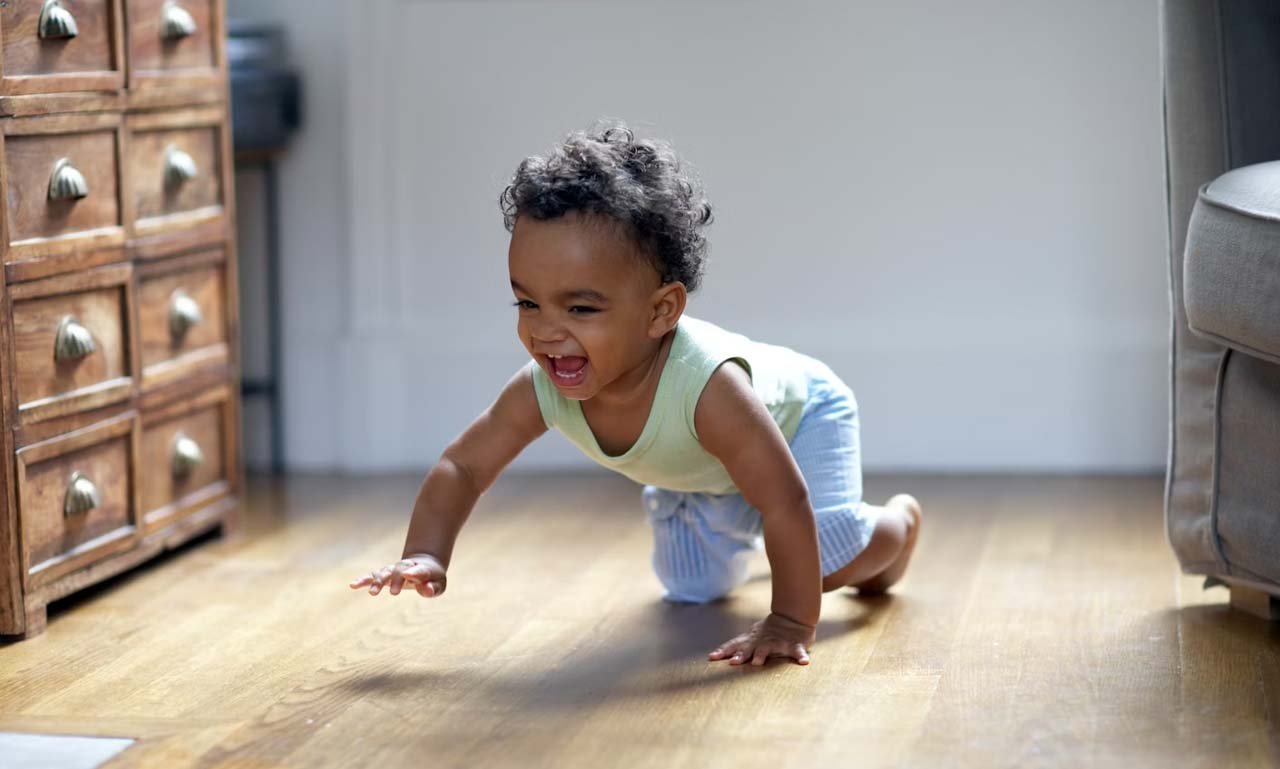
Crawling journey begins from 7-10 months:
During this stage, babies start to move either on two or all four of their limbs and explore their environment. Crawling is when the baby learns to move in a slow prone position with the use of limbs. Usually the baby crawls around the 9- month mark but some start early at 7-8 months. Some babies skip crawling stage and go straight from sitting up to standing and walking.
Do we need to teach babies to crawl?
Similar to the sucking reflex in newborns, babies pick up the crawling skill naturally as they grow. We do not really need to teach them crawling but there are a few techniques and tricks we can use to help them learn better.
It’s quite possible for some babies to bypass the crawling period and begin walking right away. Babies sometimes crawl backward before learning to crawl forward. Therefore they may cry in frustration as they move away from the thing they want to grab.
Stages of Crawling:
Babies do not wake up from sleep one day and start crawling at once, there are some signs and symbols which tell the elders around that the baby is ready to crawl. Moreover, the baby goes through various stages until he can finally crawl.
- Adequate tummy time:
First one is when the baby spends ample time on his tummy, it prepares their neck, back and shoulder muscles for crawling. For this, parents can put their baby on the floor or a clean play mat daily for sometime.
Without strong neck muscles and practice of holding their head up for longer periods of time to develop necessary skills for crawling. Giving your baby adequate tummy time, he’ll build up inner strength to tolerate his weight and move on his limbs.
- Rolling Over:
Rolling over from belly to back or back to belly is another milestone that babies achieve whey are learning to crawl. There can be a span of several weeks when babies reach their desired objects just by rolling over.
- Sitting up without support:
It’s one of the first things babies do when they. Strengthening their lower body muscles, holding their head up and looking around are building up core strength and developing a healthy spinal column.
All these things provide a stable base for working on their new skills using their arms and legs.
- Planking:
In this stage, your baby will put pressure on his legs for the first time to move forward. This rocking or planking movement helps the baby to move forward without spending much time on thinking and that’s how learning a new skill works.
You may also notice your baby pushing themselves up into what’s called a plank position or a push up position in the weeks before they start to crawl. This exercise helps those little legs to build up stamina.
- The Commando/Army Crawl:
This is where all of those exercises first culminate in actual forward motion. The style of this army crawl is such that your baby is using mostly their arms to move while propelling themselves with a little bit of leg strength the rest of the result is going to come in the final next step.
- Crawling on hands and knees:
In this stage, the baby is ready to crawl on his hands and knees with his belly up of the ground. All the previous exercises are coined to make your baby do this finally. When you finally see your baby crawl it is a sight of relief and contentment.
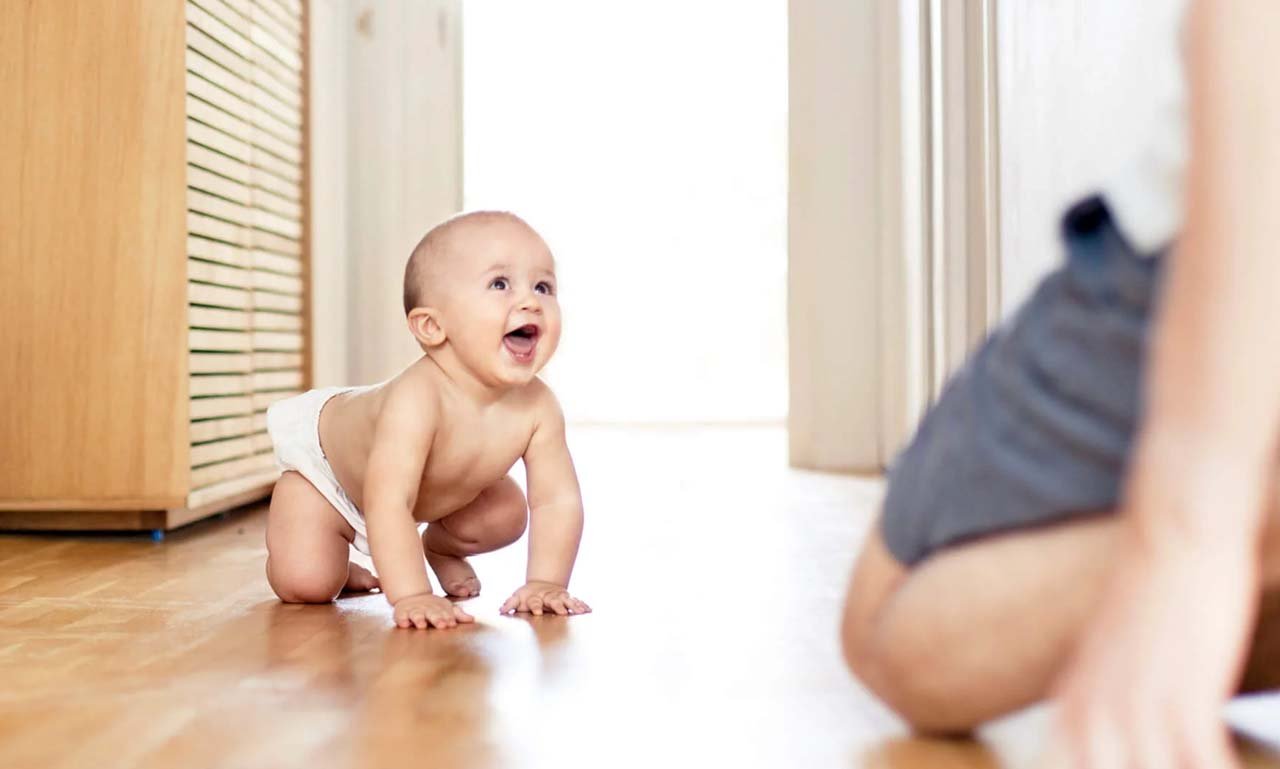
ACTIVITIES THAT ENCOURAGE BABIES TO CRAWL:
- Do push ups ( become a facilitator) :
Babies have natural tendency to imitate things/ behaviours in their surroundings. If you do push ups in front of them, they have natural inclination to copy the practice. So lay down on the floor and do push ups to encourage your baby to step forward.
- Swaying back and forth:
Put them on a play mat or on clean floor and encourage them to rock back and forth. It helps them to balance their body hence they learn to crawl. They might not be able to balance in the initial stages but they’ll do better after sometime.
- Picnics:
Babies love to play in open spaces and they bond with nature very well. Take out some time from your busy routines and move to nearby parks with your kids. You can move around with their favorite toys and some good food. Place a big soft blanket on the floor, let them crawl and enjoy the meal.
- Put objects out of reach:
Babies are attracted towards
bling things since they’re very young. Try to place some objects that emit light or their favorite toys far from them. They will naturally try to move towards them to grab them. This process increases their observation skills and develops some other necessary sensory – motor skills in them.
Conclusion:
Practice, patience and persistence are the key factors to work on whenever you’re teaching a new skill to a baby. Crawling gives both neurological and physical benefits to your child. The sight of the baby also improves when he sees an object far away and tries to reach it through crawling.
If your child doesn’t crawl even when he’s a year old, you don’t need to worry because some kids straight away go to the walking stage skipping crawling. But if you notice any odd movements, then you should consult a physiotherapist.
RELATED POSTS
View all

